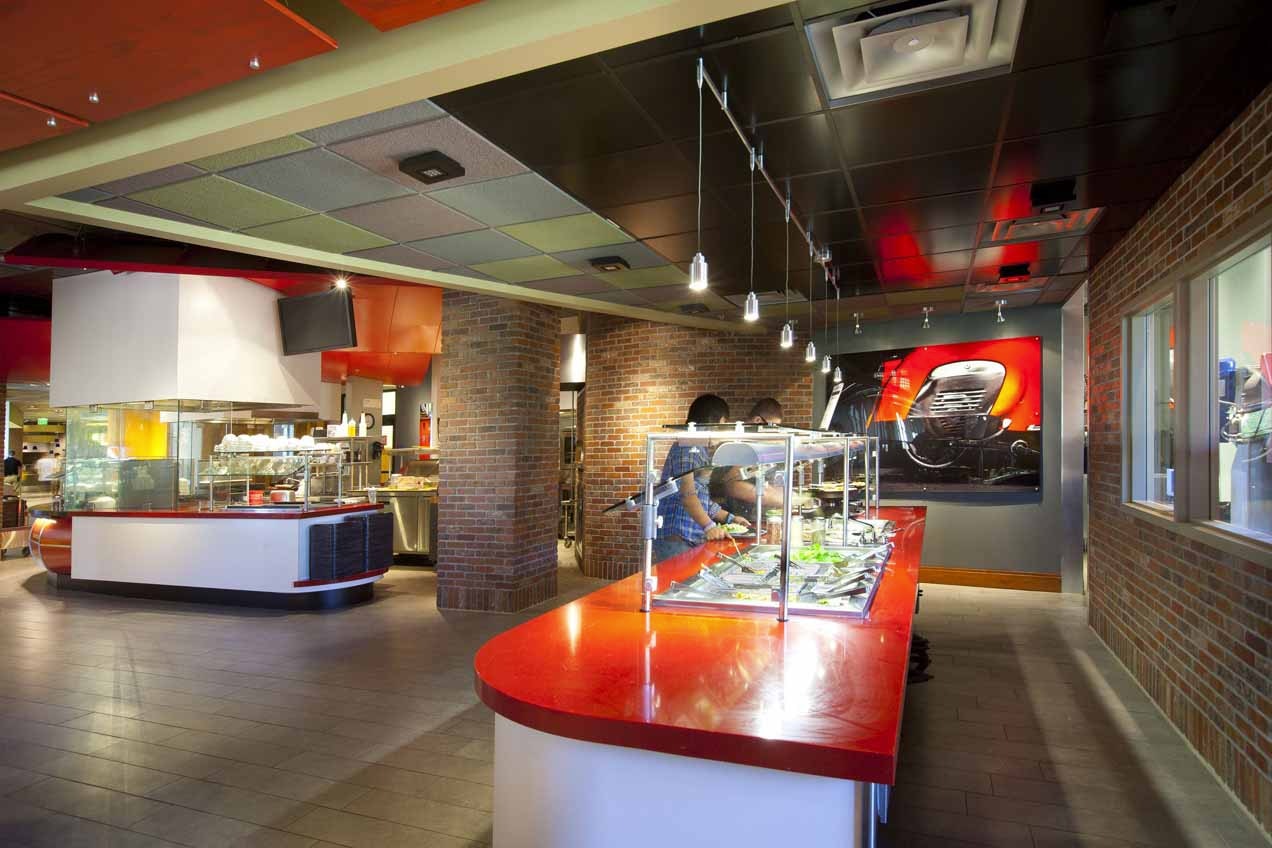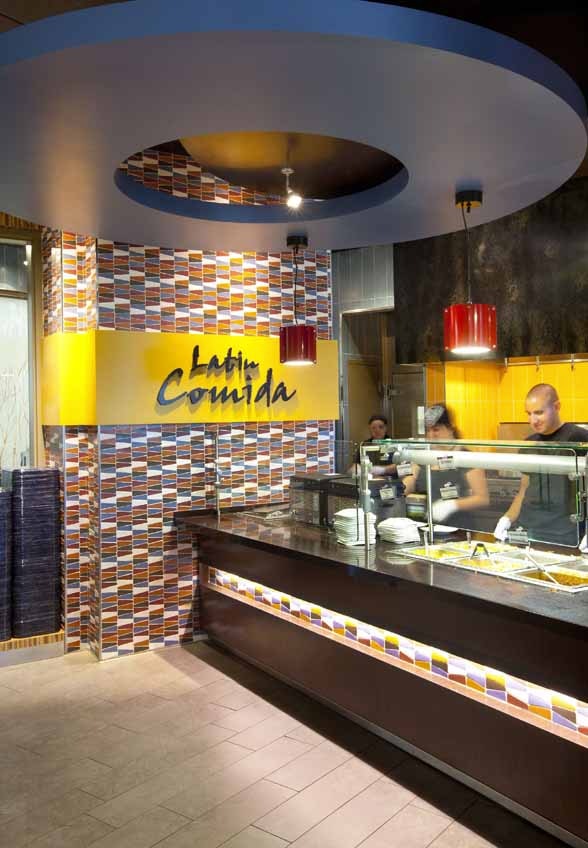Those Bright (Gourmet) College Years
I never walked five miles to school in a blizzard, but I did ingest my share of character-building cafeteria food while a dyspeptic, cholesterol-ridden scholar. Remember the latex cheese on those academic burgers that clung like Crazy Glue to the bun, rather than to the patty? Or the mystery meat enclosed in Plaster of Paris dough?
Times have changed. At the Tuscan-motif Marketplace at the University of Colorado, Boulder’s new Center for Community, featuring 12 “Micro-Restaurants,” students can choose between sushi hand-rolled before their eyes, Persian delights, burritos topped with pineapple-cilantro salsa, Brazilian or Italian specialties, old standbys like pizza and apple pie, and much more. Each of the restaurants has its own distinctive design and character as well as staff. One of the dozen eateries is devoted to desserts.
There are options, too, for vegetarians and diners with food allergies. Chefs not only make custom dishes but show, transparently, their customers how they do it. Culinary masters from area restaurants are invited in to make their Spécialités de la Maison. Homesick students can bring in a favorite family recipe and have a cook whip it up for them, on the spot. You can design your own pasta dish or omelet.
Not all the delights are gustatory: For example, the Italian food station is tricked out in a Vespa Scooter theme, while the Grotto’s ceiling displays an ever-changing light show.
Clearly, I was born way too early.
There is great temptation to lampoon such variety or grouse about the price tag, but what is going on at CU will become de rigueur nationwide. For starters, students at American universities are more diverse than ever before. They hail from every region of America, different cultures, and foreign countries, and almost all of them harbor definite ideas about what they like to eat or what is good for them.
Also, collegiate administrators have to consider the competition nowadays. CU had better keep up with DU if it wants to get a healthy helping of the annual high school crop. A final argument for a winsome culinary facility is that it keeps the students not only cheerful and well nourished, but on campus as well, closer to classrooms, dorms and the library – and away from potentially less felicitous environments.
If I may add a personal note, I attended the grand opening, and the food simply tastes wonderful and is infinitely better for you than the institutional fare of yesteryear. How I learned anything fueled on lumpen-cheeseburgers is a mystery for the ages.
Centerbrook was the design architect for the new Center for Community building, collaborating with Davis Partnership Architects of Denver. The foodservice design was done by Bakergroup of Grand Rapids, Michigan.
We're using cookies to deliver you the best user experience. Learn More







